Analysis of Air raid Shelters
The effectiveness of the various types of shelters was a key feature of many reports and generated a lot of correspondence.
In particular, the Morrison Shelter was considered to have been a great success.
The following information concerns shelters in these locations.
-
Chatsworth Terrace
-
Garfield Terrace
-
Leeman Road
-
Spalding Avenue
-
Westminster Road
Chatsworth Terrace:
The Morrison shelter within No:57 Chatsworth Terrace was examined in great detail.
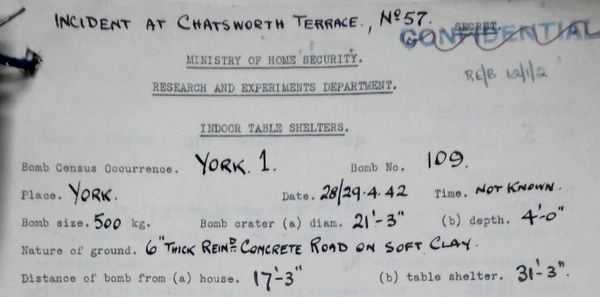
The report details the construction of the house, which was built in 1910, before detailing the location and condition of the shelter.
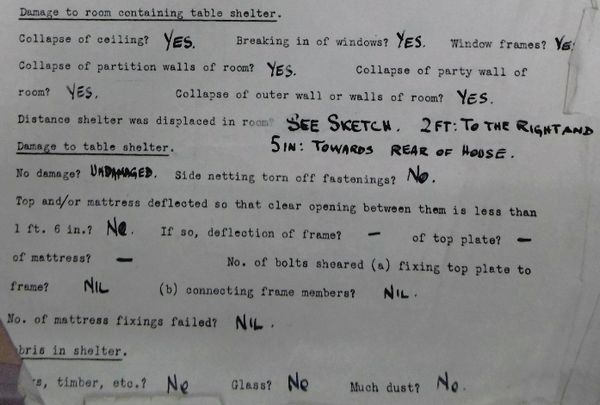
One of the sketches shows the impact point of the bomb at the bottom of the picture and details of how the shelter was displaced in the explosion.
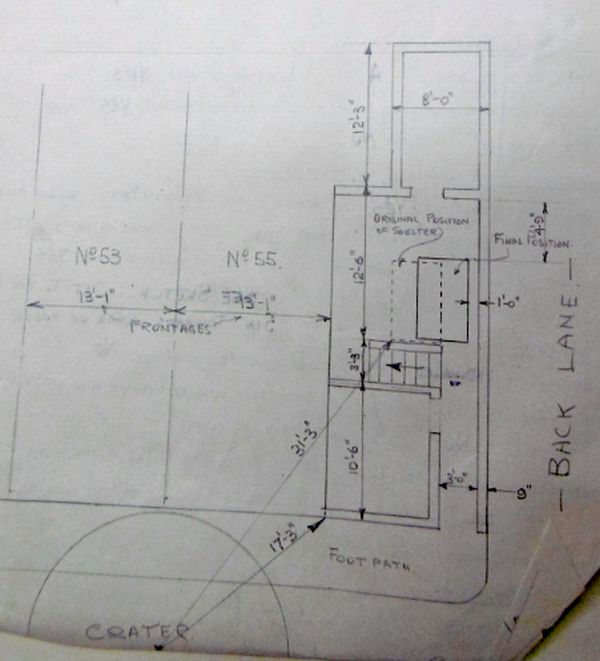
The report continues to note that:
- Approximately 1.5 tons of rubble lay on top of the shelter with no obvious distortion.
- One of the mesh covers was not fixed in place but this caused "no inconvenience to the occupants".
- The five occupants (who were all completely uninjured) were rescued after 90 minutes.
The five residents in No:53 & 55 Chatsworth Terrace were killed.
Garfield Terrace:
The report on Garfield Terrace is prefaced with these comments........
"As a witness to the damage it can be stated that it is truly remarkable that people in these conditions could possibly have survived."
There was some confusion as to the size of the bomb. The damage caused seemed to indicate 500kg but a bomb plot showed that Garfield Terrace was at the end of string of bombs known to be 250kg.
No:59 & 61 were completely destroyed and both neighbouring houses (No:57 & 63) had only 10% of their outer walls remaining.
Two adults and one child from both No:57 & 59 were sheltering in their semi-submerged Anderson shelters in their rear gardens.
Two adults and two teenagers from No:61 and two adults and one child from No:63 were sheltering under conventional dining room tables.
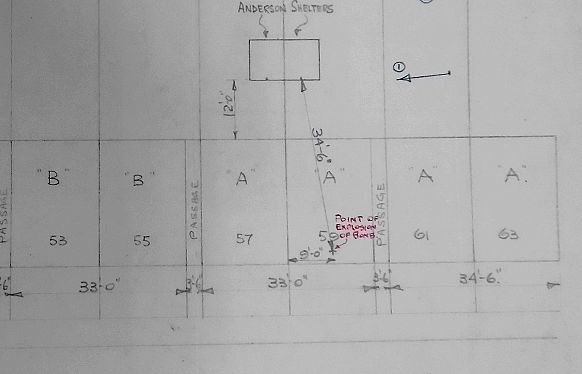
The sketch of the incident shows the point of impact and the location of the shelters. The letters on the houses show the category of damage.
Amazingly, all those in the Anderson shelters and those hiding under tables were uninjured.
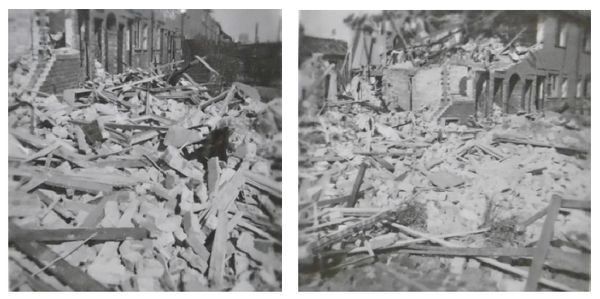
Images of the damage suffered on Garfield Terrace.
One fatality occurred in No:68 Garfield Terrace.
Leeman Road:
A number of bombs fell on and around Leeman Road and caused much destruction (and two deaths).
A Morrison shelter was being used by four occupants inside Railway Cottages when a bomb fell 23ft away from the cottage wall. The cottages received Category 'B' damage and three beams fell over the shelter. However, the shelter was undamaged and occupants were all uninjured.
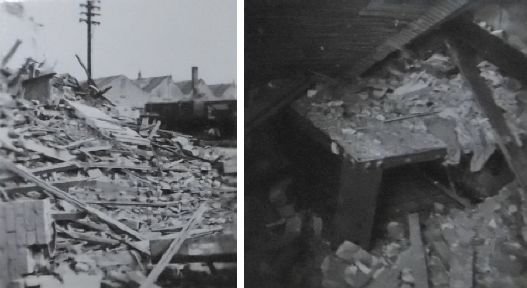
The three beams can be seen clearly in the RHS photograph.
Two people were killed in the Leeman Road area.
Spalding Avenue:
Spalding Avenue was well equipped with purpose built reinforced brick shelters each capable of holding 48 persons.
One of these shelters was 28ft from the impact point of a 500kg bomb which exploded on the surface.
The shelter, fortunately unoccupied, was completely destroyed.
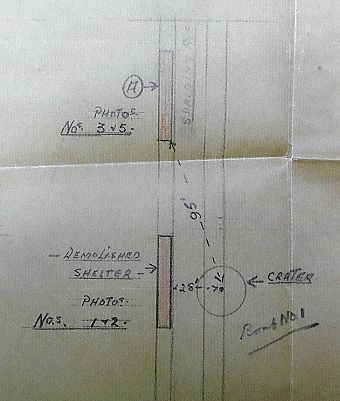
A similar shelter (marked 'A' above) was 95ft and away suffered extensive penetration from bomb fragments....as shown in the photograph below.
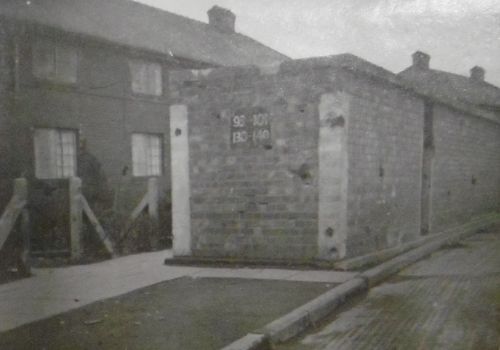
There was some consternation that a shelter built to the standard 'HSC 290' would have collapsed so dramatically. Subsequent investigations showed that the shelter had not been built well and that the mortar was not up to standard.
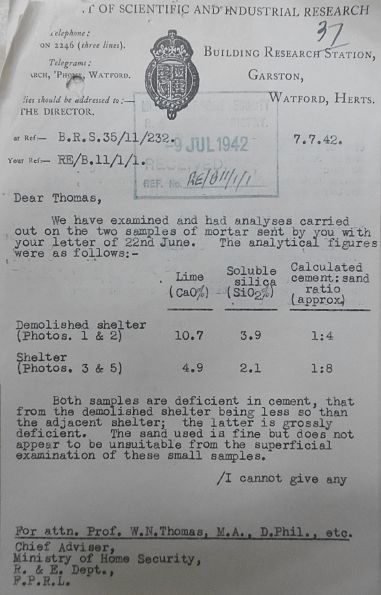
The analysis showed that the samples were deficient in cement and did not conform to the 1:3 mix required.
Nine people were killed in Spalding Avenue.
Westminster Road:
Westminster Road was heavily damaged and No:47 received a direct hit.
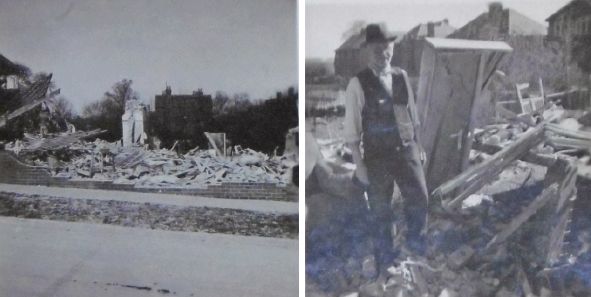
Fortunately, the occupants had a Morrison Shelter in the front room........marked in the yellow area.
The bomb exploded at the rear of the upper floor.
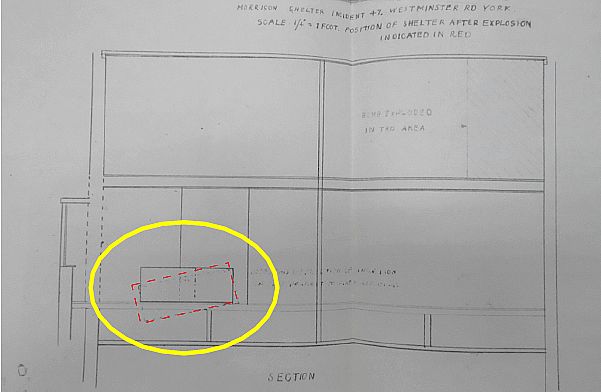
The shelter, at one end, was pushed downwards for 15 inches through the floorboards. The side meshes were torn off and the top plate of the shelter was deformed by 2.5 inches.
The three occupants survived although two suffered minor injury.
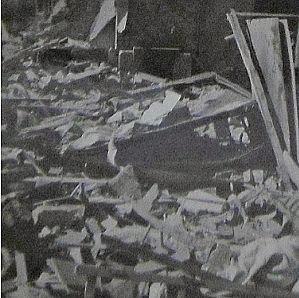
You can see the shelter depressed at one end and the top frame slightly bowed in this rather poor quality image.
Three others in Westminster Road were not so lucky and were killed.
A final thought must go to the unknown photographers who took pictures of the various shelters.
When a claim for 15/- was made for the cost of the photographs this rather severe response was forthcoming.
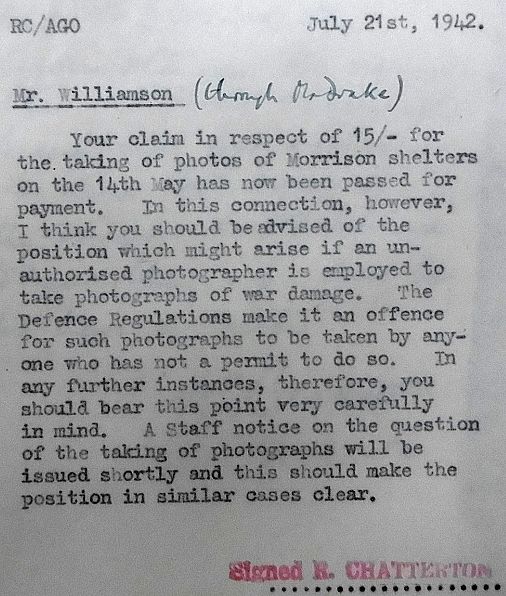
All the images on this page are extracts from documents that are copyright of the National Archives and are shown here with their permission.